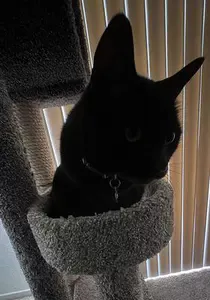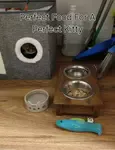Facts About the Beautiful Ragdoll Cat Breed
The Ragdoll cat breed was originally developed by Ann Baker in California.
Once rare, these longhaired beauties have quickly risen to popularity.
This is probably due to an irresistible combination of blue-eyed good looks and almost dog-like purrsonalities.
These breed facts will help you compare the Ragdoll to other feline companions you may be considering, and help you choose among the different cat breeds.
A large and friendly, blue-eyed pointed cat with many color/pattern variations and an interesting and colorful history, Ragdolls have gained a lot of momentum in the last ten years or so.
This has led to more popularity in both the US and around the world. They've also given rise to another, similar, large long haired beauty with an even wider variety of colors, the Ragamuffin.
Table of Contents
Personality
Coat
Build
Health
Grooming
Space
Special Considerations
History
Personality of the Ragdoll Cat Breed
These kitties typically have excellent, friendly purrsonalities. Here are some qualities you'll often find in a Ragdoll:
- A quiet, gentle, affectionate and easy-going cat.
- Intelligent and usually excellent with children.
- Often have an affinity for dogs.
- Generally undemanding, but very people oriented and may follow their person from room to room (dubbed "puppycats" for this reason). Some people may find this quality annoying!
Although generally calm compared to other, more high strung cats, these cats crave attention, typically enjoy being petted and groomed, and love to play. All in all, an ideal family pet.
Coat
Length: Semi-longhaired
Medium long and dense, soft, and silky in texture, the coat resists matting. The fur lies close to the body and breaks as the cat moves.
Colors: Seal, blue, chocolate, lilac, red, and cream. The coat may not develop its true coloration until the cat is two years old or more.
Patterns: Bi-color, colorpoint, mitted, and van. Points can be solid, lynx, tortie, or torbie (tortie and lynx).
Examples:
Seal point is pale fawn or cream body, with deep seal brown points.
Blue mitted has a cold-toned bluish-white body color, with blue points, except for the white areas creating the mitted look.
Build
Large and long, muscular, and broad-chested, with heavy-boned legs and a large, flat-skulled head. Many have a characteristic fat pad on the abdomen.
With a rectangular shaped muscular body, back legs longer than the front giving a bit of a rake, they have been described as graceful, subdued power.
It may take up to four years for one of these beauties to reach full size and weight. This is common among the largest breeds of house cats, such as the Siberian and Maine Coon.
Health
Generally healthy, with hypertrophic cardiomyopathy (HCM) being the biggest known breed specific health threat. The gene for HCM in Ragdolls is different from the one in the Maine Coon, but it has been identified and there is a test for it.
Reputable breeders, in an effort to improve the health of the breed, will breed the disease out of the line. Check with your breeder and be sure to get a written health guarantee.
Grooming
The lack of a thick undercoat means this breed is less prone to matting than some other semi-longhairs or longhairs, say, a Persian, which need to be groomed daily to prevent matting.
Daily grooming of any cat of course is recommended, although thorough grooming sessions once a week, and daily touch ups if possible/when needed will usually work with this breed.
Longhaired breeds often do better with steel combs rather than brushes. Use a wide tooth and a narrow tooth comb for more complete grooming.
A rake type comb or deshedding tool is suggested as well. The Furminator is always a good choice.
Space
Use of space is critical with cats. How both vertical and horizontal space are used in the home can sometimes make all the difference in stress levels.
These cats usually aren't super active, but some can be, and they are large. So, a moderate amount of space in the home is needed for each cat.
Special Considerations
White cats, or mitted cats (those with white paws/legs), may need extra grooming, bathing, or some grooming dust to keep the white hairs looking good.
Myths abound about the origin and characteristics of the Ragdoll cat breed, but these cats are said to have a high tolerance to pain. Although this concept is far more believable than skunk DNA being in the line, the pain issue has been disputed.
Note that pointed cats (sometimes referred to as Siamese coloring) often darken with age, as circulation to the extremities decreases. They also may change color a bit from season to season.
History
The Ragdoll cat breed has a rich mythology and their history includes tales of genetic modification, a government cover up, and controversy that made it difficult for the breed to gain acceptance early on. For an interesting read, see these pages on Ragdoll history by Ragdoll Cat Fanciers International.


Comments: What do you think?
Have your say about what you just read. Leave me a comment in the box below.